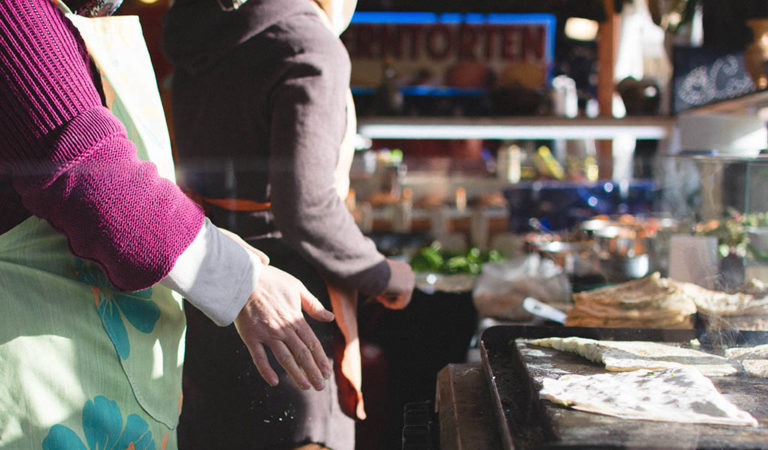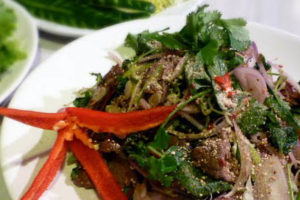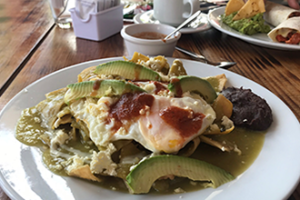
Afiyet olsun! May it be good for you!
Turkey straddles Asia and Europe and Turkish food is a mix of Mediterranean, Middle Eastern and Central Asian cuisines. Also situated along the old spice routes, for millennia it has been a multicultural hub and literal melting pot of cuisines and spices.
It is famous for plates of meat and kebabs, dolmas, platters of mezze, eggplants, flatbreads and dips, salty cheeses, olives, boreks.
While meat is popular, the variety and taste of the vegetable side dishes would satisfy even the most committed carnivore.
Turkish days are started with strong tea and meals are finished with even stronger coffee.
It is a big country and each region has its own specialities, based on the different landscapes and environments but we will try to condense down some staples of the Turkish kitchen to have you cooking like a Turk in no time.
The Turkish Pantry
Olive oil is the basis of Turkish cooking, and the whole Mediterranean region really. In Turkey they don’t have Extra Virgin, only virgin olive oil.
A side dish like green beans and tomatoes is lifted by a quarter of a cup of olive oil. You can see this is barely seasoned, with basic ingredients, but the results are delicious.
Turkish tomato paste (Domates salçasi) is tomato paste made from slowly cooked tomato and salt.
Turkish red pepper paste (Biber salçası) is like the tomato paste only made from red peppers, and is available in hot (acı) and sweet (tatlı) varieties.
Olives are served with breakfast traditionally, but also at any time as a healthy (but salty) snack.
Legumes are an important part of Turkish cooking with chickpeas, lentils, and white beans all used frequently.
Bulgur wheat is also a staple grain and is used in pilafs and added to salads.
A simple lentil soup is lifted by the addition of red pepper paste for a traditional soup made in all Turkish family homes. Or this vegan Turkish couscous uses the most basic ingredients to make a delicious dish.
Turkish Spices
While Turkey is famous for spices and has the world-famous spice bazaar in Istanbul, spices are used sparingly to complement the dish, and not overpower it.
Sumac is a ground dried fruit. It is slightly sour, tangy flavour that complements many dishes, especially meats.
Red pepper flakes (pul biber) these are crushed rather than ground and are used as an ingredient as well as a garnish.
Black pepper flakes (isot or urfa biber) adds a lovely smokey chocolatey, coffee flavour, it is similar to but not as strong as chipotle and is also sweet with a chewy texture.
The famous adana kebab, grilled over fire showcases how sumac works with savoury foods
The second video is an American guy nerding out and being a bit of a weirdo at a spice shop in south-eastern Turkey but with a good explanation of the peppers and how they process them.
Mint – Turkish mint is slightly lemony, and less sweet and strong than the one we are used to in Europe. It pairs well with savoury foods and is often scattered as a garnish over dishes like manti.
Paprika adds colour, flavour, spice and is used with meats, fish, veggies and sprinkled on final dishes for a sprinkle of colour and presentation.
Pomegranate mollasses (nar ekşisi) is used in marinades for fish and meat as well as on salads in the place of vinegar.
Rose water is famously in Turkish delight (lokum) and is used in other desserts.
Dairy in Turkish cooking
Yogurt – fun fact, the Turkish word for yogurt is… yoğurt, and that’s because they invented it (probably, this is a disputed fact). Every Turkish fridge contains at least one 2kg tub of yogurt. Turkish yogurt has the watery whey strained off so is thick and creamy. Fun fact #2 it is called Greek yogurt in English because marketers in the US thought it sounded fancier than Turkish yogurt.
Cheese – feta, old cheese (kaşar peyniri), stringy cheese, herbed cheese – always served at breakfast and is also used in boreks, and brioches and even some desserts like knafeh which is Palestinian but still popular in Turkey. I’ve mentioned Turkish breakfast a few times. Here’s a nice video and one of the olive selection in a regular supermarket in Ankara (not dairy but goes with the breakfast cheeses).
Vegans and Vegetarians and Turkish cooking
There are many delicious vegetarian and vegan dishes in Turkish cooking. There is a dish called Çiğ köfte that was previously made from raw meat but now from bulgur wheat that has been kneaded to a soft texture. It is served in lettuce leaves (or bread), with mint and pickles, a squeeze of lemon juice and some pomegranate syrup.
These vegan koftes are great and fairly easy to make, and eggplant features heavily in Turkish cuisine so this simple stuffed eggplant recipe is an easy one to make, you can add some biber salçasi for a richer taste.
Gluten free Turkish dishes
The Turkish cuisine does include a lot of bread, pastries, and bulghur wheat but if you avoid those there are still many delicious dishes for you to try. As a general rule the meat and salads and sides don’t have any wheat. Rice is common too but make sure it doesn’t have little broken noodles in it.
Turkish cooking pages we love
Ozlem’s Turkish Table Healthy, Delicious, Easy Turkish and Mediterranean Recipes For the Home Cook by Ozlem Warren. This is probably the best resource of Turkish recipes on the internet. And check the links section too for more Turkish cooking blogs.
Elvanca Tarifler shares her ‘tried and true’ recipes in Turkish and in English on her YouTube channel.
A Kitchen in Istanbul is a Norwegian ex-banker turned Istanbul resident and food blogger. Lovely recipes with his own little twists.
Seasonal Cooking in Turkey previously Claudia and now Lulu present recipes and stories from Turkey.
Almost Turkish has easy-to-follow, mostly vegetarian, almost Turkish recipes
Saniye Anne’s YouTube channel is amazing, not only does everything look absolutely delicious but it is also easy to follow. The recipes and methods are very traditional, it feels like learning from a grandmother or auntie in a Turkish village.
Emre is adorable and a skilled cook. His passion and pride for Turkish cooking and his love of spreading his knowledge is infectious.
The Spruce Eats is a US food website that is a bit corporate and reads like a magazine but actually the recipes are great.
Top photo credit Jacob Kapusnak / www.foodiesfeed.com


